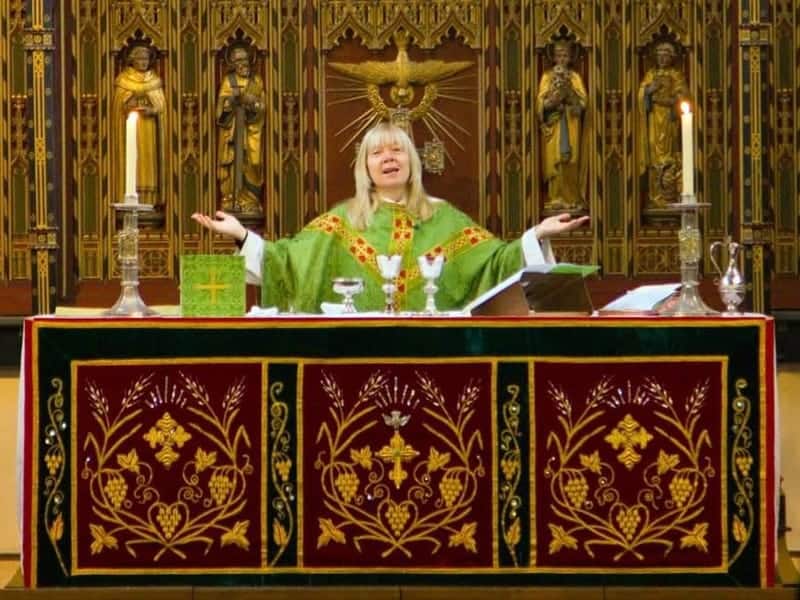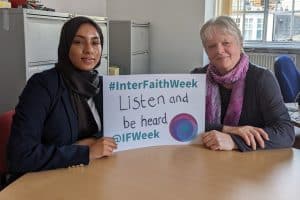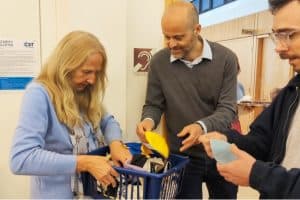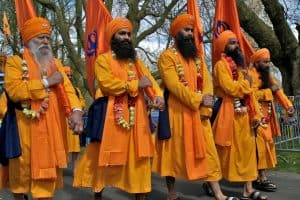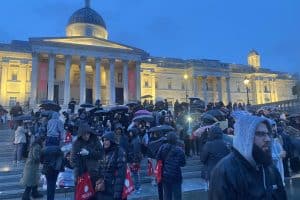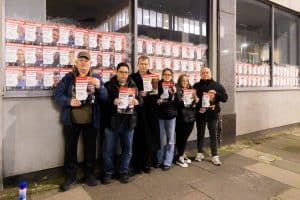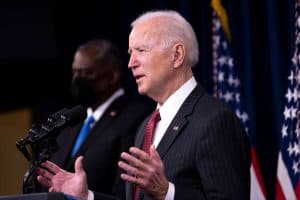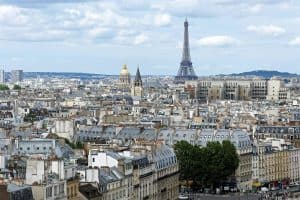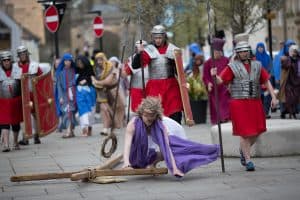By Tim Wyatt, 5 May 2020
Church of England bishops have agreed to lift restrictions which have prevented clergy from entering their churches during the coronavirus pandemic.
There will be three phases as infection levels improve:
- An initial immediate phase allowing very limited access to church buildings for activities such as streaming of services or private prayer by clergy in their own parishes, so long as the necessary hygiene and social distancing precautions are taken
- Subsequently access for some rites and ceremonies when allowed by law, observing appropriate physical distancing and hygiene precautions
- Worship services with limited congregations meeting, when Government restrictions are eased to allow this
The decision was made in an online meeting this afternoon, led by the Bishop of London, Dame Sarah Mullally, who was the UK’s Chief Nursing Officer before entering the ministry
In a statement, the House of Bishops “recognised that there have been some welcome signs of improvement in the current situation, including a reduction in new cases and hospital admissions giving evidence for hope”.
The bishops agreed that the decision on the timing of when to implement the revised advice on ministers or worship leaders praying and streaming from their church buildings should be made by individual diocesan bishops, depending on their local situation. They made clear that this is guidance – not an instruction or law – and that it will be constantly reviewed depending on the national situation.
Bishop Sarah Mullaly said: “We are hugely grateful for all that our churches and clergy have been doing to support the Government’s message to stay at home, to support the NHS, and to save lives. While it is clear there will be no imminent return to normality, the emphasis is now turning towards how and when aspects of social distancing can be eased, although we remain mindful of the potential risks of a second wave of the virus. Nevertheless, it now makes sense for us to start to look ahead to the potential easing of restrictions so that our clergy and churches can be prepared.”
This turnaround followed growing dissent at the earlier decision to keep clergy out of their buildings along with their congregations. Some priests argued it was unnecessary as there was no chance of spreading Covid-19 if an individual cleric went into the building. They insisted live streaming services from vicarage living rooms were a poor substitute.
A scathing article by a retired bishop, Peter Selby, in the Catholic weekly The Tablet suggested Anglicanism was “going private” by not following their Catholic counterparts in livestreaming communion from inside church buildings.
This proved a rallying cry for the anti-lockdown faithful who organised an online campaign and produced an open letter to the C of E’s House of Bishops urging them to abandon their current policy. Hundreds of vicars, rectors, chaplains, church wardens, theologians and more have added their names to the missive, which said the C of E had failed its “responsibility to the nation” and “stifled our prophetic witness”. “Domestic settings cannot replace the church buildings whose architecture, symbolism and history represent the consecration of our public life,” they conclude. The letter was published in The Times shortly before the House of Bishops meeting which reversed the ruling.
The row saw clergy and laity alike drawn into two camps. One side valued the sacredness of church buildings, the continuity of the mass and the value of tradition. The other prioritised personal connection, preferring informal worship and believing that church is first and foremost a people not a place.
Often Anglo-Catholic priests reported their parishioners were shocked and saddened that even the vicar could not go into the church, whereas those on the evangelical wing said the issue was an irrelevance to their congregants.
However, although most of the anti-lockdown side were drawn from the more traditionalist and formal Anglo-Catholic wing of the C of E, their cause crossed tribal boundaries. Prominent liberals and even some evangelicals added their names to the open letter.
The division is believed to have been present among the bishops of the church, although it is unclear what debate has gone on inside the private discussions of the House of Bishops. But a handful have weighed in on social media. The Bishop of Willesden, the Rt Rev Pete Broadbent, made it clear he wishes the injunction on clergy to be lifted and hinted his fellow London bishops feel the same. On the other side, the Bishop of Croydon, the Rt Revd Jonathan Clark, published a thoughtful blog gently critiquing Bishop Selby’s arguments, while others including the Bishop of Ripon, the Rt Revd Helen-Ann Hartley, defended the current position.
A separate but somewhat connected controversy erupted on Tuesday when a group of 36 Conservative MPs signed a letter calling on the Church of England to also relax its rules on holding funerals. The MPs asked for priests to be allowed to go inside church buildings so they could hold funerals. Socially-distanced funeral services are instead being held at the graveside in churchyards or inside crematoriums. Only a small number of family members are allowed to attend. The C of E’s advisor on healthcare policy, the Rev Dr Brendan McCarthy, had earlier said a priest would always be provided upon request for funerals, but they could not take place inside church buildings because it could not be done safely and would require difficult deep-cleaning in between each funeral.
COMMENT AND LINKS
Rev Marcus Walker, rector at Great St Bartholomew’s, London, who led a service which flouted the rules, in April:
“This is such welcome news. Giving people back their churches, even if only virtually, is a great gift of hope from the church. As the psychological wounds of Covid grow, allowing people the sight of the places which gave them comfort and friendship, and in which they encountered God, can only help mitigate and heal. Thanks be to God!”
The House of Bishops statement
The Church of England’s official coronavirus guidance page:
Archbishop Welby’s video explaining and defending the prohibition on clergy going into their church buildings
The priest leading the campaign to let clergy back into their churches, the Rev Marcus Walker, made his case in The Critic
The Rev Bryony Taylor has written a blog defending the C of E’s stance on not holding funerals inside churches.

